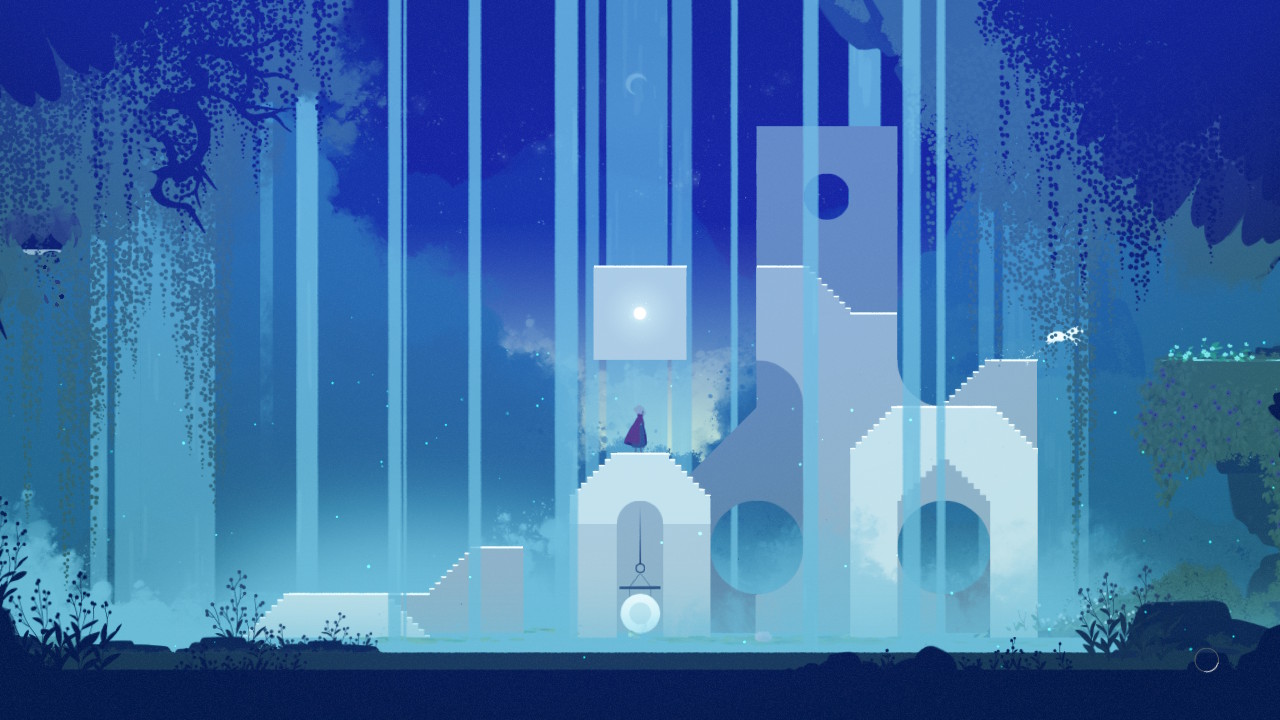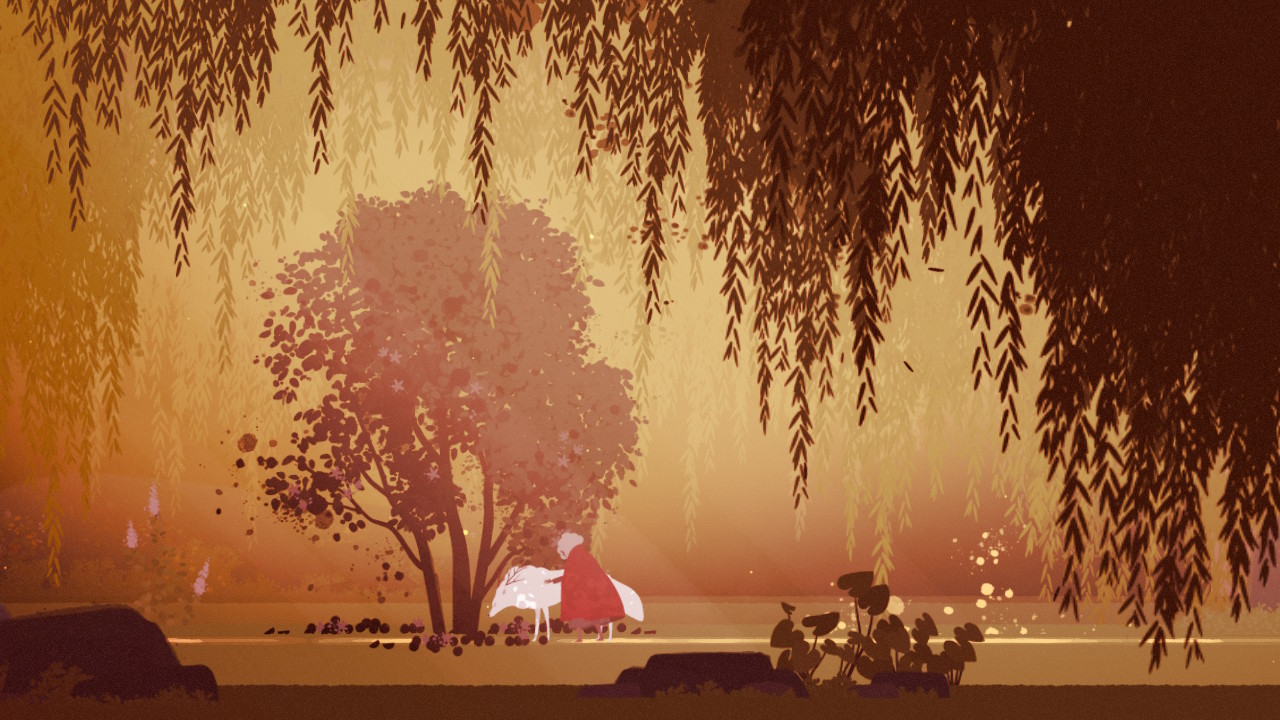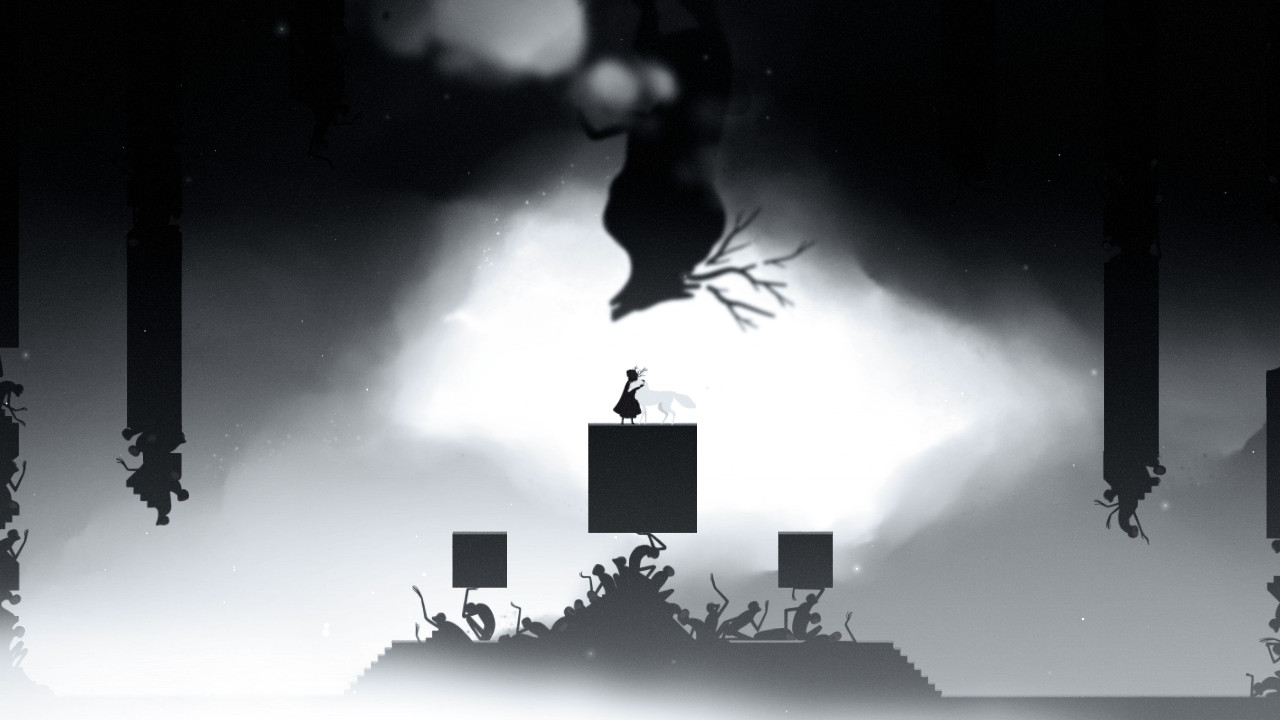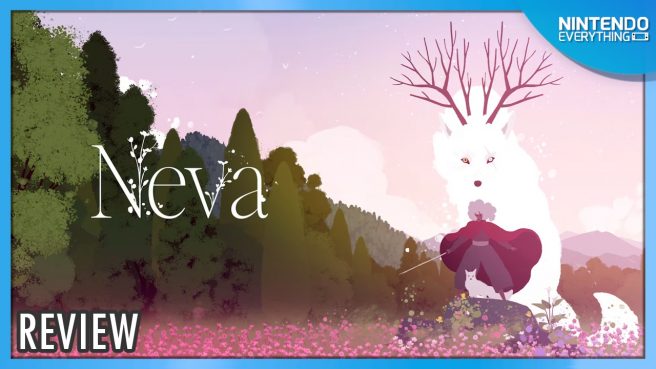[Review] Neva
System: Switch
Release date: October 15, 2024
Developer: Nomada Studio
Publisher: Devolver Digital
Nearly six years after its release, I still find myself occasionally thinking about my experience with Gris. The debut title of Nomada Studio, it was a visually stunning experience that explored deeply personal themes of loss and acceptance, and it left a lasting impact on me in a way few other games can claim. I was keen to try out Neva, the studio’s second title, which I found feels no less poignant for its exploration of our relationship with the world and one another, and is a more than worthy spiritual successor.
Much like Gris, Neva presents and explores its themes through the medium of a journey from the perspective of the warrior Alba and the titular wolf Neva. Together, the two must travel across a land that is slowly becoming corrupted and being broken apart by a sinister ooze-like entity. Across its four chapters – one for each season, beginning with summer and ending with spring – the game explores various points in the relationship between the two characters as Neva grows and matures through visual storytelling as you traverse the land, as well as a handful of short cutscenes that play at key moments.
On a most basic level, Neva is a tale about the relationship between parent and child, and how this changes and evolves as children mature and become more independent, although there are greater subtleties to be explored and interpreted if you choose. It’s a game that often raises more questions than it answers: just who (or perhaps what) are the shadowy figures that are corrupting the land, where did they come from, and why are they so determined to kill Neva? What is the purpose of the ruins that the duo activate on their journey? What is the story behind Alba, and where are the rest of humanity? Although the main focus of the game is entirely on the relationship between Alba and Neva, the world they find themselves in is one that invites speculation, and is at once both easy to relate to and difficult to make sense of.

But where Gris was often quite subtle with its themes, gradually painting a more complex and subjective narrative with each subsequent color that was added to the world as you progressed, Neva is notably more direct, to the point of being almost grounded: the journey is as much physical as it is spiritual. Neva’s appearance and personality changes between each chapter as she ages to become a stronger and more independent character, less reliant upon Alba and more willing to act upon her own desires and impulses. It can feel slightly disorienting at first, as the time gap between chapters is implied to be longer than a season, and Alba herself doesn’t noticeably age visually during the game, but it takes the time over each chapter to explore how the relationship between Alba and Neva has changed over the time gap between them, keeping things moving at a comfortable pace.
Although Neva displays a greater amount of growth over the course of the game as she grows and matures, there are subtleties to Alba’s personality and reaction to these changes that also give her some measure of character development. The game gives you a dedicated button to call out to Neva or interact with her if she’s close by, and the tone of Alba’s voice changes noticeably between each chapter. She scolds Neva as a cub when she wanders off, cries out in distress if the two are separated suddenly or attacked, and lowers her voice to a barely audible whisper in darker, more hostile areas where danger lurks around every corner and you are frequently ambushed by enemies. This is the game’s only voiced dialogue, and is entirely at your control: if you so choose, you can have Alba remain entirely silent. It has a powerful emotional impact when used at times, making for an interesting and evolving relationship dynamic between the two and giving you a more personal involvement in the narrative.

In the absence of any background lore, dialogue, or even the ability to explore the world, Neva relies heavily upon its visuals to tell its story, and it’s an absolutely beautiful game. There is notably less expressionism than Gris in the game’s natural environments, which have a striking watercolor aesthetic that makes use of highly contrasting colors to give each one an almost painful amount of vibrancy. This heightens the atmospheric effect when they begin to break apart and become corrupted, often as you are journeying through them, and the scenery notably reflects the chapters here. The natural landscapes also serve as an excellent juxtaposition to the highly stylized geometric architecture that you’ll explore, which is notably more chaotic, as you’ll frequently need to pass through narrow corridors and pass through floors. Each location feels distinct, making excellent use of lighting and color to depict a tangible atmosphere that screenshots don’t really do any justice to.
It’s an experience that is definitely best played in docked mode however, as the camera will frequently pull out to give you a wider view of the landscape, particularly when exploring the dilapidated architecture. This has the unfortunate side effect of making Alba absolutely tiny in handheld mode, and there are times when she doesn’t stand out quite as cleanly against the background as the blindingly white Neva, or the inky black enemies. The game also has a tendency to obscure her behind foreground objects, or within a heavy mist, as you traverse certain areas, and often walks a fine line between art and readability that, although it never becomes frustrating, can occasionally slow pacing when it isn’t immediately apparent what you need to do in order to progress.

As beautiful as Neva is, it can be difficult to identify exactly what you can interact with at times. Places where you can climb up walls are depicted by small pinpricks of light that are difficult to see in handheld mode, and platforms you can jump on have extremely thin white lines across their surface that aren’t always immediately visible. Certain parts of the scenery can be broken through to drop down into other areas, but when your surroundings are fragmented, it can be difficult to determine exactly where you need to hit. These moments were isolated incidences, but they happened often enough during my playthrough that I found that my immersion was broken at times when I realized what I needed to do to progress had been staring me in the face and I simply hadn’t seen it because it blended in too well with the rest of the scenery.
Although the title does allow you to adjust brightness, I often felt as though it also needed the option to adjust the contrast, as in those moments when the game adopted an almost mono-color approach, it became difficult to tell exactly where I was and where I was supposed to be going no matter how much I tinkered with the brightness setting. Surprisingly this became a greater issue when playing in handheld mode on a Switch OLED, which amplified the colors and, when combined with the smaller screen, made it very difficult to make out at times, even though the overall visual quality was significantly better.
Neva would best be described as a puzzle platformer, and is a fairly linear experience. There are times when you will need to double back to explore in a different direction, but it’s difficult to really get lost in the game as the path you need to take is usually just to go forward, or occasionally upwards. Playing as Alba, you have the ability to double jump and dash, which makes platforming feel smooth and satisfying, and it doesn’t require a great deal of precision most of the time as between these two abilities it is usually very easy to gain sufficient height or distance to cross gaps. There are moments when you will need to complete small platforming challenges with timed switches, and a couple of chase sequences that apply slightly more pressure, but for much of the game you’re free to take things at your own pace. The handful of environmental puzzles are similarly straightforward, with the difficulty only increasing notably if you look for the Hidden Flowers in each chapter. These are generally found either along concealed side paths or are out in plain sight and require some trickier platforming to reach and serve as the only collectibles, and I was able to find most of them without any difficulty, although one or two were a little more difficult to reach. The game will helpfully tell you how many are in each chapter from the menu, and will even let you move between fixed checkpoints in each chapter to recover any you may have missed the first time through, making it easy to go back to acquire them later on if you choose.

Some light combat elements are also mixed in with the puzzle platforming, which makes Neva feel slightly more ambitious than its predecessor. Alba has a simple three hit combo that she can use to dispatch the shadowy adversaries that she encounters, with an additional downward strike move that can be executed from midair. Enemies have relatively simple attack patterns, and there isn’t much in the way of variety, but the small combat segments the game will occasionally throw at you serve as a nice break from the platforming, and the few bosses in the experience feel like particularly satisfying climaxes at the end of a chapter.
Although initially you will have to take these on alone, after the first chapter Neva will also enter the fray, assisting with enemies as it pleases her and at your direction, making it easier to take on multiple foes at once, and also exploit their weaknesses, which are often out of attack range and will need to be targeted with her wolf charge ability first. Alba has a total of three hit points, which can be recovered during combat if you hit enemies in rapid succession without taking any damage, giving combat a certain ebb and flow to it that encourages you to learn enemy attack patterns without punishing you for failing to do so perfectly. If you simply don’t care for the combat, you can enable Story Mode at any point to make yourself immune to damage and defeat enemies more quickly, although I found that this does not make the platforming any noticeably easier.
The Verdict

Neva is potentially a tough game to recommend, as what you take away from the journey will be an entirely personal experience, dependent on your own interpretation of the themes and your own personal life experiences. If the themes do not resonate with you, the basic puzzle platforming and combat don’t really do enough to allow the title to stand above its contemporaries in the genre, and although the world invites speculation and intrigue, it offers very little in the way of answers. However, for its visual splendor alone, I would say that this is a journey worth undertaking, and even if it fails to strike a personal tone, the developing relationship between Alba and Neva is a heartfelt and often poignant tale.
A copy of Neva was provided by the publisher for the purpose of this review.
